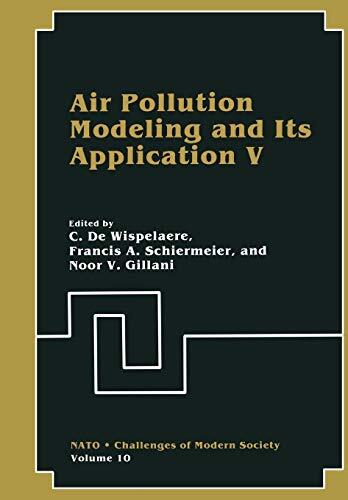
Air Pollution Modeling and Its Application V
아직 평점이 없습니다
Science & Technology
형식
페이퍼백
페이지
786
언어
영어
출판됨
May 22, 2013
출판사
Springer
판
Softcover reprint of the original 1st ed. 1986
ISBN-10
1475791275
ISBN-13
9781475791273
설명
This book delves into the intricate world of air pollution modeling, offering a comprehensive examination of techniques and applications critical to addressing contemporary environmental challenges. With a focus on innovative methodologies and real-world implications, it serves as an essential resource for researchers, policy-makers, and environmentalists alike, providing insights into the complex dynamics of air quality management.
C. De Wispelaere, the author, brings a wealth of knowledge to the discussion, drawing from extensive research and practical experience. The content is meticulously organized, covering a range of topics that highlight the importance of advanced modeling approaches in understanding the sources, transportation, and effects of air pollutants. Each chapter is supported by case studies that demonstrate the effectiveness of these models in predicting air quality outcomes and guiding policy decisions.
As urban areas continue to grapple with deteriorating air conditions, this work stands out as a timely contribution. Its emphasis on integration between scientific modeling and public health goals underscores the urgent need for collaborative strategies to mitigate air pollution, ultimately fostering healthier communities and sustainable environments.
C. De Wispelaere, the author, brings a wealth of knowledge to the discussion, drawing from extensive research and practical experience. The content is meticulously organized, covering a range of topics that highlight the importance of advanced modeling approaches in understanding the sources, transportation, and effects of air pollutants. Each chapter is supported by case studies that demonstrate the effectiveness of these models in predicting air quality outcomes and guiding policy decisions.
As urban areas continue to grapple with deteriorating air conditions, this work stands out as a timely contribution. Its emphasis on integration between scientific modeling and public health goals underscores the urgent need for collaborative strategies to mitigate air pollution, ultimately fostering healthier communities and sustainable environments.